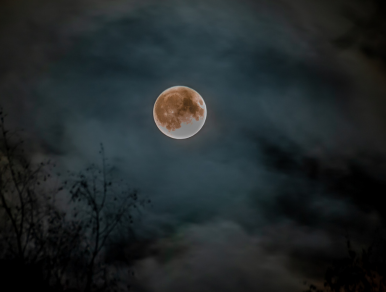Werewolf: Vertical guide


While many stories include werewolves, the Werewolf subgenre as it appears on Wattpad has some unique features. In this primer, we’ll dig into the core components of Werewolf and the central appeal for readers.
Disclaimer: the Werewolf subgenre as it has emerged in the last few years has tended to be very heterosexual and heteronormative, with an emphasis on hyper-masculine dominant men and submissive women. When we’re describing the genre, we’ll use language that reflects this, and will describe Alphas as men and Lunas as women. But this is intended to be descriptive, not prescriptive. Feel free to innovate on these conventions as your heart desires!
Werewolf story components
Werewolf has some very specific genre components that readers are looking for, which should be considered foundational to the genre. If you want to write in this genre, your story should include these components in some way.
Pack Hierarchy
Werewolf packs are structured along strict hierarchies. At the top is the Alpha, who is in charge of the pack and is dominant over everyone else. All members of the pack defer to the Alpha. The Alpha’s partner is the Luna, who usually occupies a place of honor in the pack, but the Luna’s authority is based on the Alpha’s. Omegas are at the bottom of the pack, and are usually bullied or outcast in some way, and Betas are in the middle. Sometimes stories will have “Rogue” werewolves who aren’t part of a pack, which is usually a position of dishonor or danger. The love interest of the story is almost always the Alpha and in a position of authority and dominance, or becomes the Alpha by the end of the story.
While there is a lot of variation between stories on how these elements show up (many Omegas or just one, sometimes Betas have a different name or aren’t named), the strong hierarchy is always in place and is a core part of the genre. The point here is that this is a society with rigid, highly stratified social roles. These roles are usually either inherited from one’s parents, or are determined through magic or some essential quality of the person, though sometimes roles are earned through work or conflict, depending on the story.
These pack dynamics drive a lot of the story conflict, particularly the love story between the dominant Alpha and the downtrodden Omega, and are a core element of what readers are looking for in the genre.
Fated Mates
While each story approaches this differently, the idea of the fated mate or soulmate is central to the Werewolf genre. The mechanics of how this works differ from story to story, but the core of this is the idea that the romantic leads are destined to be together. There is some quality about each of them that destins them to be together. This bond can’t be chosen or broken, and happens as a result of fate or magic–it’s not the result of a pre-existing relationship, but rather comes into being when the characters meet. The mate bond is initiated when the characters meet, but will usually need to be “completed” or consummated in some way, usually by sexual intimacy but sometimes by ritual or pregnancy. The fated mate bond creates a deep longing in both characters for each other, sometimes creating physical pain or weakness if they’re apart for too long, or if the bond is not completed.
The longing and desire for one’s fated mate is a crucial component of Werewolf; the leads are irresistibly drawn to one another, but pack hierarchy, circumstances, and their own emotional reactions to the mate bond create obstacles to realizing the bond fully. The leads must move through this conflict in order to find their happy ending, and resolving this conflict is the bulk of what these stories are usually about.
Shifting
The ability to take on a wolf form is what gives the Werewolf subgenre its name. The mechanics of shifting vary by story. It can be voluntary or based on the moon cycles, but in most stories, werewolves have to shift to stay healthy. Being in wolf form gives the characters access to information they don’t have in human form, usually in the form of scent, but sometimes in the form of psychic bonds or telepathy. Shifting puts the characters in touch with their more primal emotions and allows them to express things they can’t express as easily in human form.
Shifting is usually a background component of Werewolf stories. It’s what creates the pack hierarchies and fated mates that drive the story conflict, but is not usually in itself a source of story conflict.
Genre Appeal
Now that we’ve reviewed the main story components of Werewolf, let’s look at what draws readers to these elements. When you’re writing in a genre, it’s important to know what draws readers to that genre. Subverting a genre is fine, but the majority of what we’re looking for in our Verticals is work that plays to the genre, rather than subverting it. We know readers find these elements appealing, so being mindful of them is a great way to gain traction in the genre space and find success in our Verticals.
Power Structures
The pack hierarchy in Werewolf offers a way to play with power dynamics in a romance in a way that often feels safer than stories that reflect real-world power dynamics. The Alpha’s authority and dominance are absolute, but Alphas don’t exist in the real world, so they’re very safe to fantasize about. The possessive, controlling, protective lover is a common fantasy for many people, and the Alpha is a heightened version of that fantasy, set in a world with explicit social rules and conventions that shore up the Alpha’s authority. The Alpha isn’t playacting dominance; he is dominant in some essential way that is based on who he is as a person, and he has authority and power over his pack and his love interest/fated mate. But the powerful Alpha has one weakness, which is his longing for his fated mate, the Luna. Though the Luna has less power than the Alpha in the pack and is sexually submissive to him, she finds power in having a powerful man need her so intensely.
Zero to Hero
Along with the strict power structure fantasy is the fantasy of being able to navigate that power structure. In very successful Werewolf titles, we see an arc for the main character where she goes from being despised, bullied, and outcast as an Omega, to ruling the pack through her connection to the Alpha. She is the protagonist of the story, and the bulk of the story is about her process of ascension and the various setbacks and conflicts she encounters as her relationship with her fated mate develops. This power fantasy is perennially appealing to readers across genres; in this version of it, the fated-mate bond is the main character’s way out of her low social status, and it’s by accepting the love of her fated mate that she rises through the ranks.
Longing
The main emotional content of the romance arc in our most successful Werewolf stories is longing. Deep, visceral, primal longing for one’s fated mate paired with conflict either within the relationship or external to it creates a dynamic that readers flock to. Werewolf readers love the primacy of the fated mate bond, how all-consuming it is for both characters. In order to work, the obstacle to the longing needs to be well-developed, otherwise the characters would just want each other and then get together. Convincingly drawn-out longing creates a heightened sense of need and gives the eventual resolution a lot of fire behind it, while the fated mate bond reminds us that the characters will be together in the end. Notably, the longing persists in Werewolf beyond the initial consummation. After the leads are together, you can still return to the longing every time they are apart or in conflict. The fated mate trope allows you to sustain the longing even within the established relationship, which is part of what makes it so appealing.
Trope World
We’ve talked before about Trope Worlds, where the story takes place in a world different from our own, where the rules of the world share a lot of overlap between stories in the same subgenre. Werewolf is its own Trope World, with specific conventions that readers expect to see when they open a story. For most Werewolf readers, the appeal is actually in the similarity of the stories to one another. The rules of the Trope World are set up to give the reader a certain kind of reading experience (power structures and movement through them via romantic relationship, fated mate longing) and they are only interested in the world insofar as they are a setup for these elements. It’s very similar to how regency romance readers go into the genre with a certain kind of expectation around how the regency society is set up. Regency readers are not interested in the composition of the House of Lords or in the effect of industrialization on the working poor; they’re interested in social strictures and social mobility in the upper classes and how the characters navigate their romantic and sexual feelings in that context. A book that advertises itself as a regency romance but spends most of its worldbuilding focusing on industrialization is going to lose regency fans because that’s not what they come to the genre for. Similarly, Werewolf readers are not generally interested in complex mythology or urban fantasy worldbuilding. They come to the genre for certain elements (as we’ve outlined here) and the worldbuilding should serve those elements, not overshadow them. The benefit of this kind of worldbuilding is that it’s super approachable and easy to get new readers into the genre. That approachability is one of the hallmarks of Werewolf and why it’s so popular: it’s easy to get into and understand.
Werewolf Pitfalls
Consent
A big part of the appeal of Werewolf stories is the fated mate bond between the Alpha and the Luna–the idea that these characters have no choice but to be together; that there is some bond that overrides every other emotion on a physical and psychic level and makes their need for each other all-consuming, regardless of their conflicting feelings.
However, it is very important that all physical and sexual intimacy between the characters is consensual, i.e. they are both agreeing to intimate touch with each other with a mutual understanding (spoken or unspoken) of what is going to happen.
We have strict content guidelines on the inclusion of sexual assault in stories. We do not allow stories with romanticized sexual assault or pornographic content of any kind on our platform. For more information on what we remove, see our Content Guidelines.
We’ll have more extensive information on writing consent coming soon. In the meantime, check out Scarletteen for an overview of how consent works in the real world, and consider this article on writing consent in romance or this deep dive on writing consent.
Writing consent can be complicated, particularly because there are lots of examples of popular media that are not very good at representing or respecting consent. Consent is about more than not saying no, or even saying yes once and assuming that covers everything. Writing good consent is about establishing mutual desire between the characters and building their connection to each other so that the reader understands that both of them feel good about the activities they’re doing together. Romance readers of all subgenres are ultimately interested in the connection between the characters. Sexual intimacy is a great way to build and demonstrate that connection, and writing consent is about demonstrating mutual desire and agreement. A great way to begin thinking about consent is to ask the question: what do these specific characters actually desire?
Writing consent in Werewolf comes with additional dimensions to consider due to the nature of the subgenre. This is an overview of specific pitfalls we see in this genre, rather than a full explanation of writing consent.
Ravishment Fantasy
A lot of readers find a lot of appeal in the fantasy of a much bigger, stronger lover who desperately wants and needs them and will do anything to sate that need. This is a fictional dynamic and not reflective of how relationships should work in the real world, but we still want to be careful in how we depict these things.
If ravishment fantasy and the overriding need of the mate bond is part of the appeal of Werewolf for you and your readers, you can still include some of that appeal while maintaining consent between the characters.
-
Conflicted feelings. It’s okay for characters to feel like they shouldn’t want or need each other as badly as they do, as long as they are both consciously making a choice to be intimate.
- “I don’t want this but it’s kind of nice” is NOT okay. The conflict here is that the character doesn’t really want to be doing what they’re doing, which means their consent is not present.
- “I shouldn’t want this because society/my family/religion tells me it’s wrong, but actually I do want it” IS okay.The conflict here is between what the character wants to do and what they think they should do. As long as their partner is also consenting and feeling good about it, it’s okay for them to keep doing what they’re doing.
-
Nonverbal consent. Nonverbal consent practices are the ways people express desire and check in with each other with their body language. Your characters don’t necessarily have to verbally check in with each other, they can use nonverbal cues.
-
“The Alpha cages his mate against the wall and she shrinks in fear” is NOT okay. In this example, the partner’s body language (shrinking away) indicates fear and lack of consent.
-
“The Alpha cages his mate against the wall and she leans in eagerly” IS okay. By leaning in, she is indicating both to him and to the reader that she is enjoying what is happening between them.
-
Consensual restraint or rough sex. It’s okay to have one partner hold the other down as long as this is mutually desired, agreed upon, and communicated. Verbal communication should be the standard here, but this can take the form of nonverbal communication.
-
“The Alpha holds his mate down. She tries to break his hold, and he grips her tighter” is NOT okay. In this instance, she is trying to get away and he ignores her nonverbal cue.
-
“The Alpha holds his mate down. He loosens his grip, but she twines her fingers with his and squeezes his hand.” IS okay. In this instance, he is giving her a chance to redirect by loosening his grip, and she indicates her agreement through deepening the embrace by holding his hand and squeezing it.
-
“The Alpha holds his mate down and asks if she’s enjoying it, and she confirms.” IS okay. In this instance, they are verbally checking in with each other and agreeing about the activity they’re doing.
-
BDSM. Consensual BDSM is totally fine to include in your story, and can be a great way to include the thrill of the ravishment fantasy and power exchange. The key here is that both characters have to discuss and agree to it. For more on BDSM, you might check out this article from Scarleteen on consent and BDSM.
-
Consensual ravishment fantasy. If both characters talk about it and agree, they can act out or roleplay a ravishment dynamic where one pretends not to want what is happening, but they are both fully aware that they are both consenting.
-
Power dynamics. It’s okay to have an unequal power dynamic between your characters, as long as the less powerful character still has the option to leave without facing negative consequences.
The Appeal of the Monstrous
For many people, the appeal of Werewolf is the extremely powerful, otherworldly being whose non-human qualities put him in touch with something more primal than everyday human experience. The Werewolf Alpha is a figure of both power and emotional and physical hunger. Many readers find this to be a deeply appealing fantasy because it allows room for exiled emotions like desire and rage to find expression in ways that they can’t in real life. The emotions we label as monstrous find expression in a body we understand as monstrous.
However, it is very important that when sexual contact is taking place in stories, that the Werewolf character still has recognizably human qualities that differentiate him from a wolf. For more information on this, see our Content Guidelines.
If the otherness and animality of the Werewolf is a draw for you or your readers, here are some ways you can emphasize that:
- Size difference
- Otherworldly strength
- Strange eye colors, long canine teeth, sharp fingernails: these evoke nonhuman qualities while still being recognizably human
- Super-human senses like smell or hearing
- Tails, animal ears, or fur on a humanoid person
Emphasizing these kinds of qualities can retain the appeal of the monstrous and otherworldly, while still remaining obviously human.



















